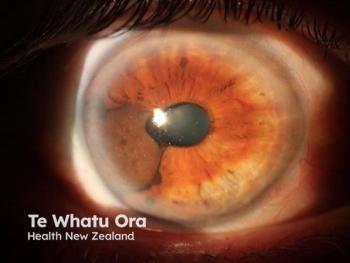
Johnson & Johnson's commitment to consumers
Johnson & Johnson is phasing out certain controversial preservatives and other materials from its products. The move is in response to consumers’ concerns.
Johnson & Johnson is phasing out certain controversial preservatives and other materials from its products. The move is in response to consumers’ concerns.
“The safety of all the ingredients we use - including those ingredients we’re phasing out - are supported by science and have a long track record of safe use. Our Safety and Care Commitment, however, is about reformulating for trust and that means sometimes going beyond the science to ensure the peace of mind for our consumers and the health care professional," says David A. Mays, Pharm.D., M.B.A., senior director, Global Scientific Engagement - Skincare Fellow, Johnson & Johnson Consumer and Personal Products Worldwide. "That’s why we’ve made a public pledge to reduce or eliminate certain ingredients in our baby and beauty products worldwide. We want people to have complete confidence when using our products, and if they have a concern - even about an ingredient that the science says is safe - we want to be responsive,”
According to J&J Consumer Group director, global issues management, Peggy Ballman, the company intends to make these changes by the end of 2015:
- Reduce 1,4 dioxane, a byproduct of the process that makes cleansers mild and nonirritating, to a maximum of 10 parts per million in adult products.
- Phase out formaldehyde-releasing ingredients in adult products, but making rare exceptions when alternatives are not feasible or safe in formulation with other ingredients.
- Limit parabens in adult products to methyl-, ethyl- and propyl-parabens;
- Phase out triclosan from all adult products by 2015. None of the company’s infant or baby products worldwide contain triclosan.
- Phase out diethyl phthalate (DEP) from all products. J&J uses no other phthalates. In fact, all the company’s baby products worldwide are now phthalate-free. “As for adult products, in 2006 we stopped using DEP in new adult products, and will phase out its use in all our adult products by the end of 2015,” according to Ms. Ballman.
- Phase out fragrance ingredients: polycyclic musks, tagetes, animal-derived ingredients, rose crystal and diacetyl. “We do not use them in any new baby or adult products and are phasing them out altogether by 2015, with priority given to baby products,” according to Ms. Ballman.
The preservatives J&J will use in place of those it is phasing out have gone through the company’s five-step safety and assurance process.
“Only a few preservatives meet these standards, such as benzyl alcohol, benzalkonium chloride, chlorphenesin, phenoxyethanol, and sodium benzoate,” according to Ms. Ballman.
For more information, go to:
More articles in our package on OTC product ingredients:
Newsletter
Like what you’re reading? Subscribe to Dermatology Times for weekly updates on therapies, innovations, and real-world practice tips.


















